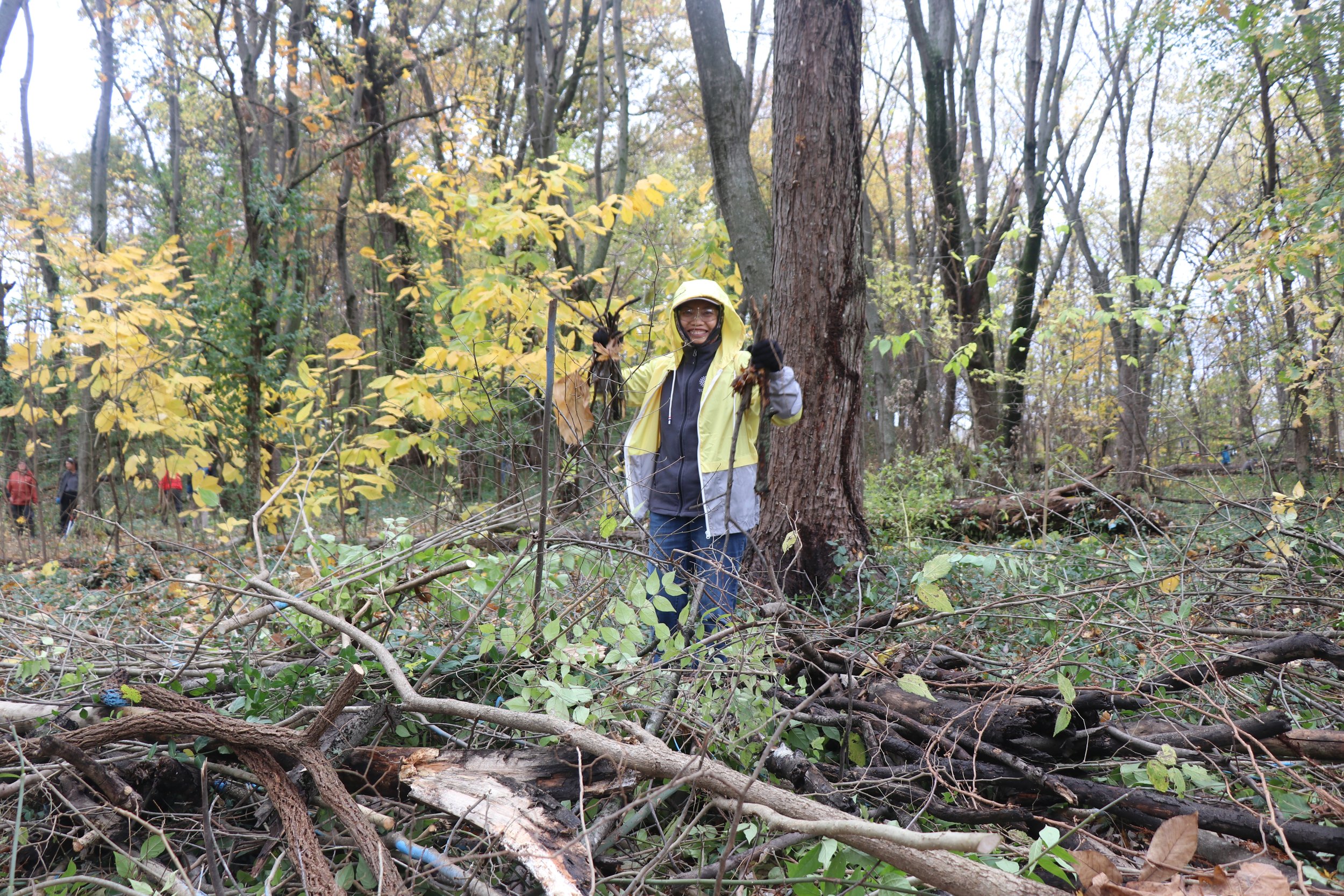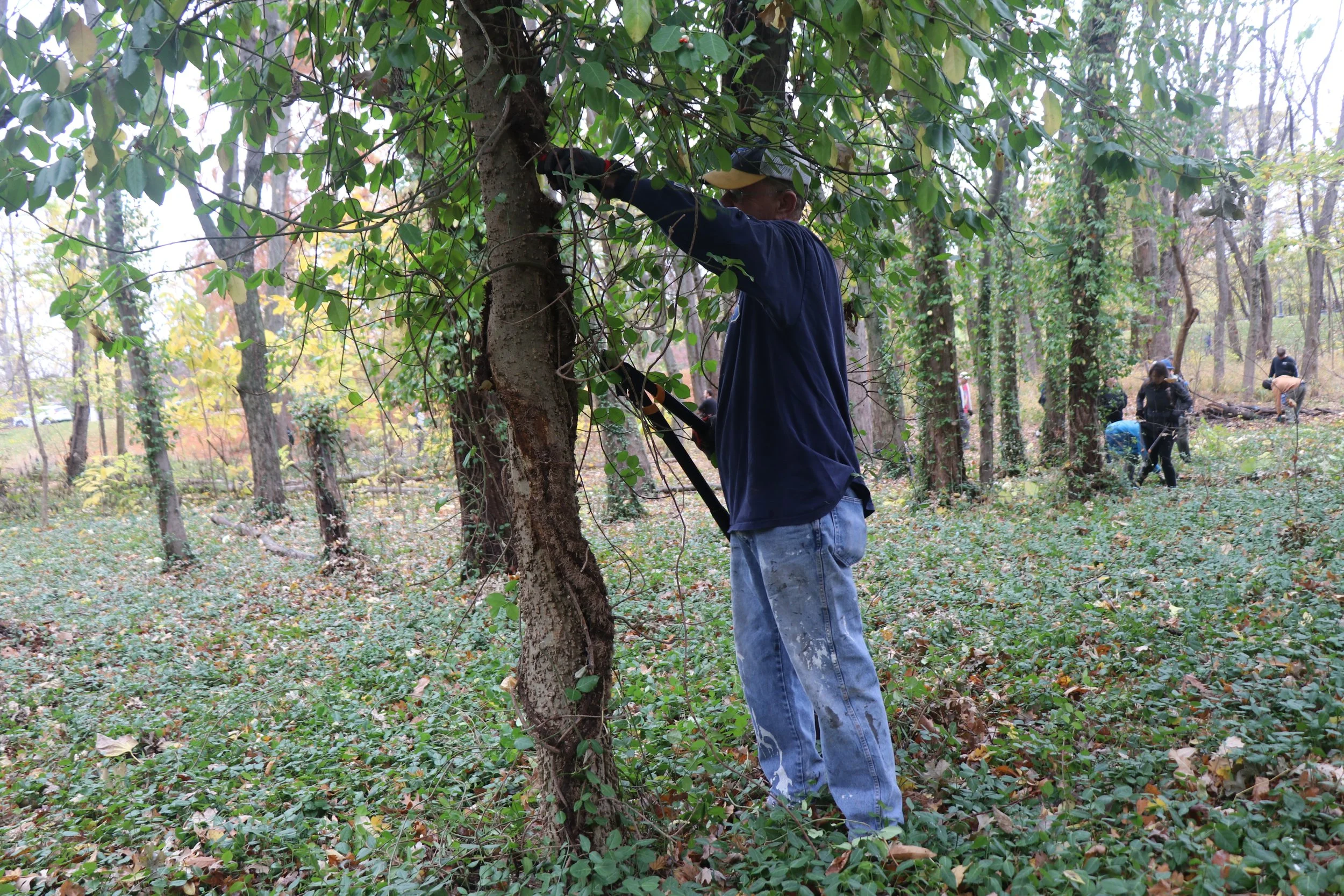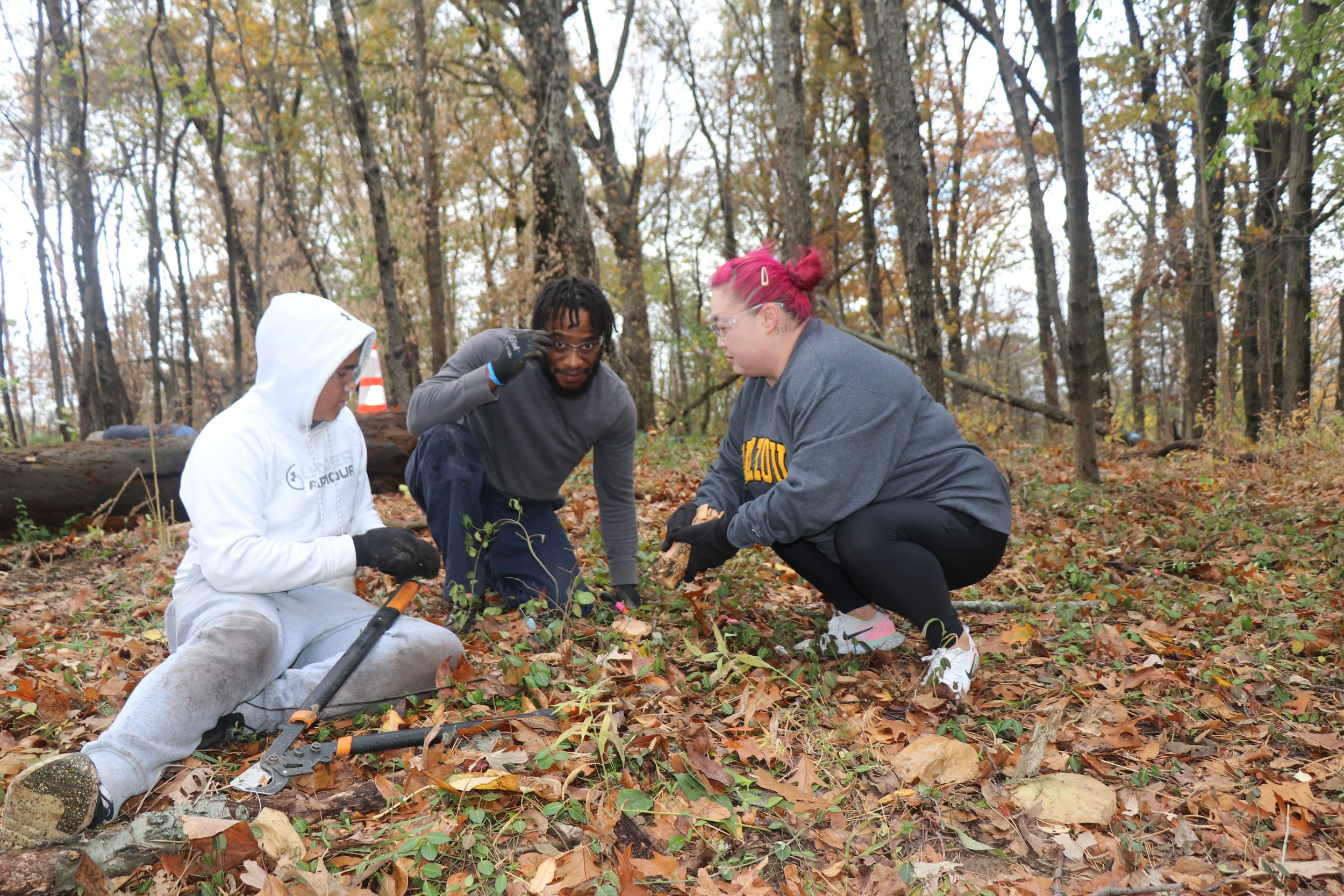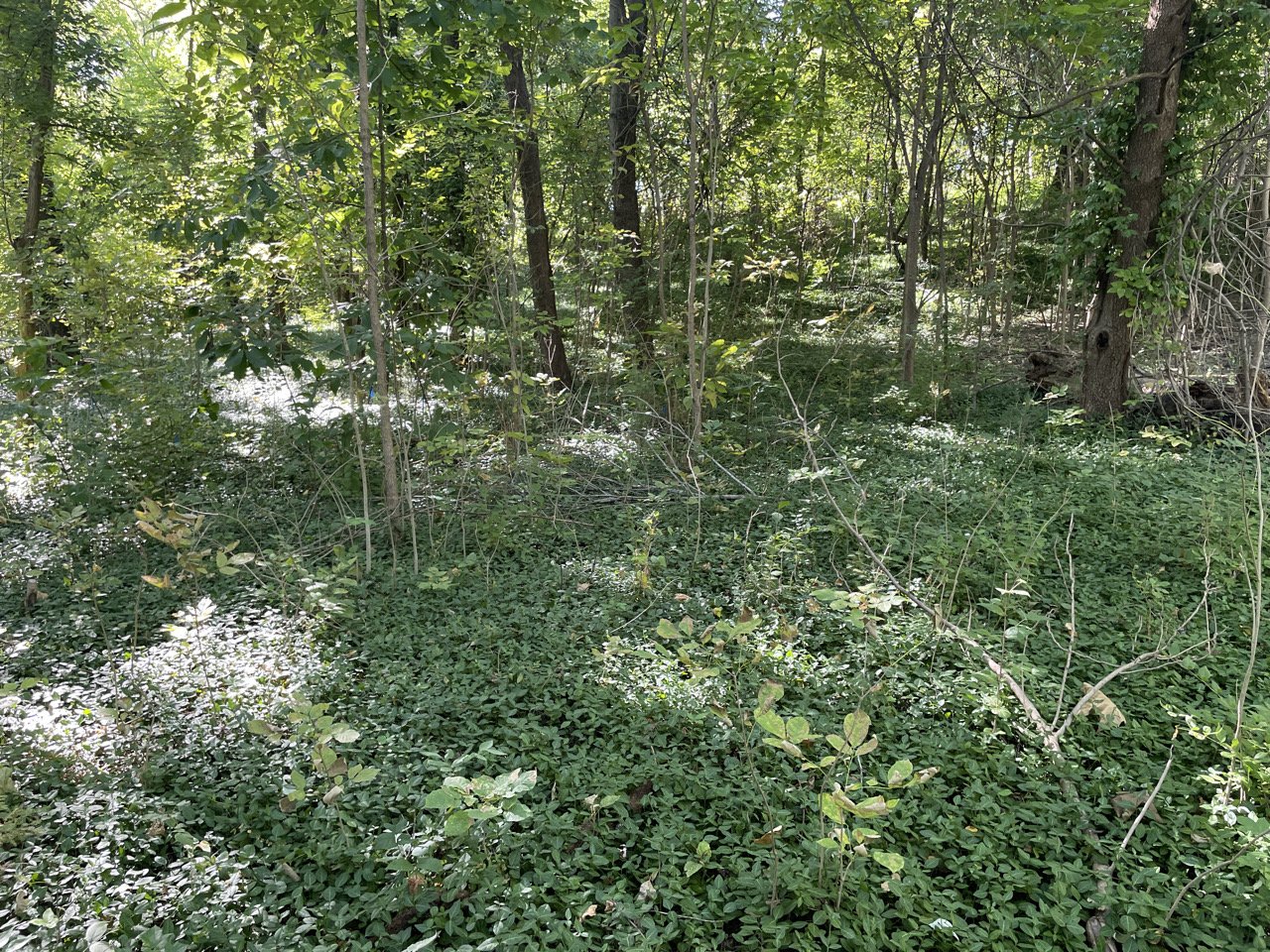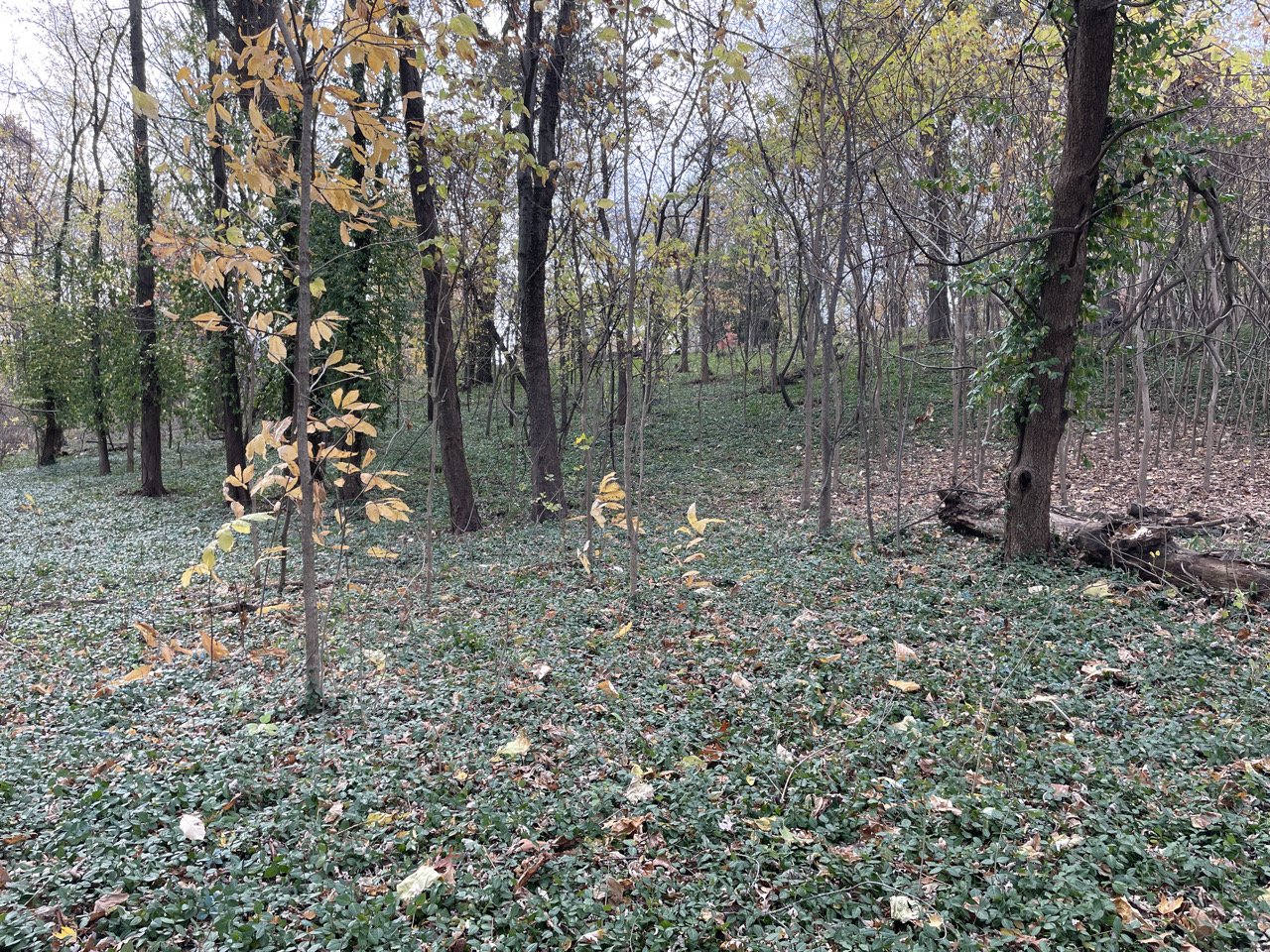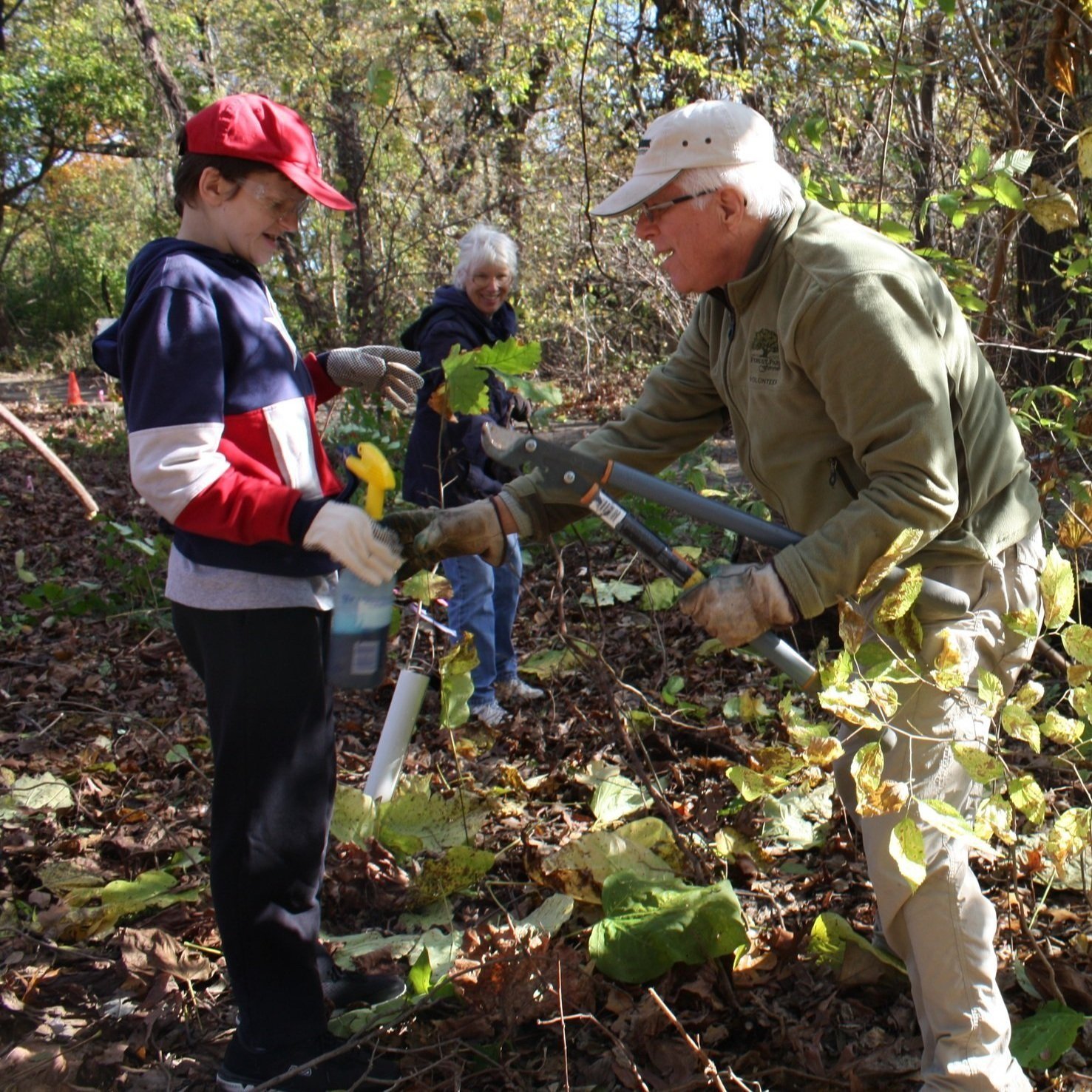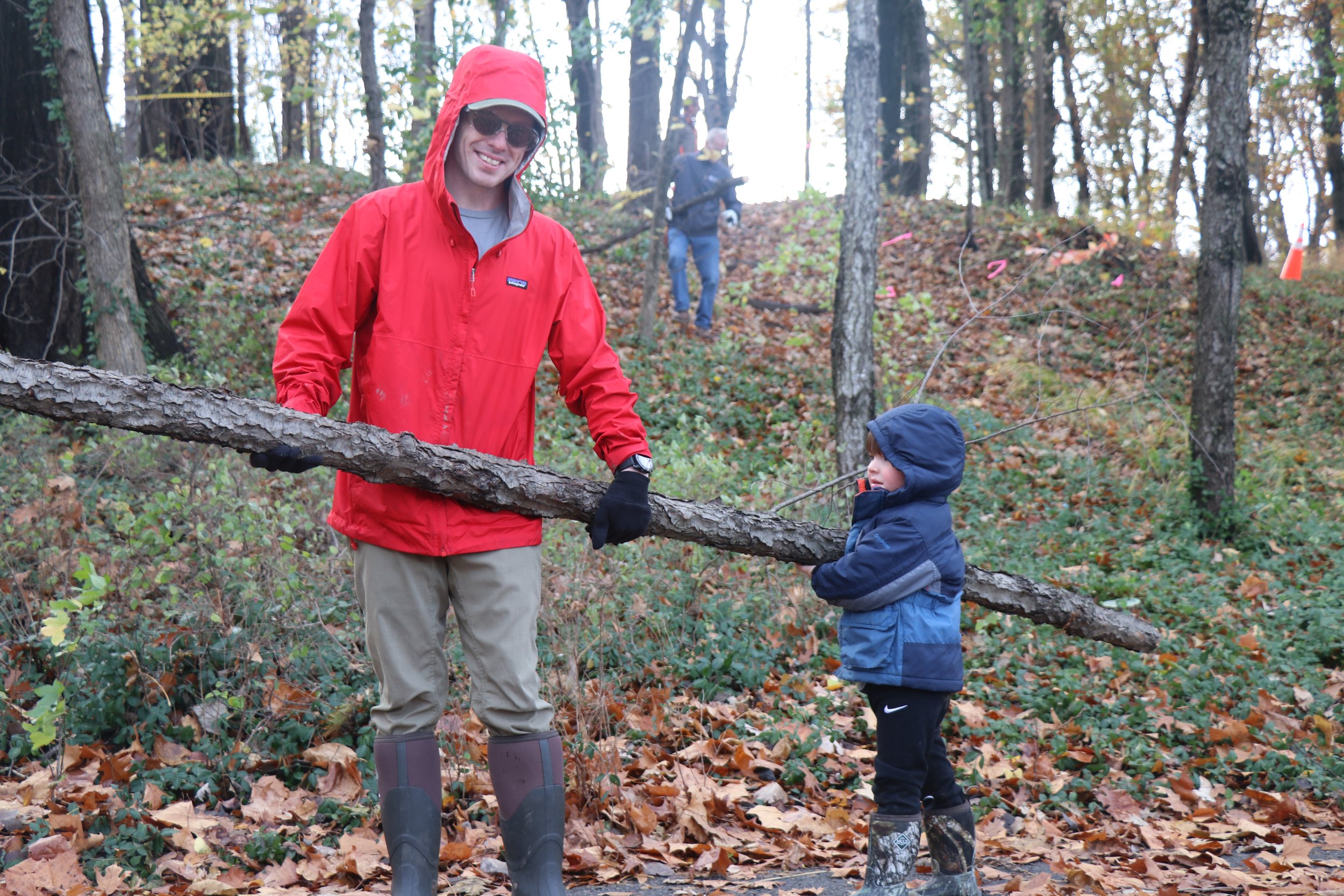Removing Invasive Plant Species Helps Restore Kennedy Forest
Invasive Removal & Forest Restoration Project Day
On November 4, for the 24th year, volunteers will work together to enhance Forest Park habitats. This year’s effort will be in John F. Kennedy Memorial Forest, located on the southwest side of the Park.
Initiated by the Kennedy Woods Advisory Group (KWAG), this annual event once focused exclusively on removing invasive bush honeysuckle in Kennedy Forest, and the effort has since grown to include a comprehensive strategy for species removal that builds on KWAG's mission of improving habitat quality for native plants and animals.
This year, the restoration team will remove bush honeysuckle (Lonicera maackii), sweet mock orange (Philadelphus coronarius), white mulberry (Morus alba), Chinese wisteria (Wisteria sinensis) and other selected plants from Kennedy Forest.
Project efforts include managing woody saplings by cutting the vegetation and treating the stems with a dyed herbicide to kill the root system, and cutting vine windows.*
*vine window /vīn ˈwindō/ (noun) the cutting of a vine as high up a tree and as low to the ground as possible, creating a "window" or gap
Images above are a Before and After in Successional Forest, in a section that was cleared during the 23rd annual event in 2022
WHY remove invasive species?
Invasive species are non-native plants and other organisms that thrive in areas where they don't naturally live, thereby disrupting the structure of diverse, healthy ecosystems. Aggressive plant species out-compete native Missouri flora by growing at different times of the year, reproducing abundantly, blocking sunlight, or altering soil chemistry. The ecosystem can degrade and biodiversity decreases – making the system more vulnerable to disease and stress.
The living world and all its systems are complex, and removing invasive species is only one component of supporting a thriving habitat. However, eliminating plants should never be considered the final step. Continuous stress on a natural community can have long-lasting impacts, so proactive management is better than waiting until the plant has taken over. After removal, the next step to supporting a robust, resistant system is maintaining diversity by replanting with native flora.
WHO can come to the Invasive Removal/Forest Restoration Day?
Individuals, small groups, families and children over 12 are welcome to join us – but registration is required. Many restoration efforts will happen at once, and an adult must supervise children under 18.
Volunteers will be navigating uneven walking terrain, bending or lifting within their physical ability, and will work with a range of species during Project Day.
WHAT to wear?
Volunteers should bring work gloves and wear weather-appropriate attire that you won't mind getting dirty, including long pants, long sleeves and sturdy closed-toe shoes with socks. This attire helps protect your limbs, minimizes exposure to poison ivy and is a safety requirement. Masks are optional, but please follow CDC guidelines regarding COVID-19 and exposure to those with COVID.
WHAT Forest Park Forever will bring?
Forest Park Forever will provide beverages, snacks and an assortment of gloves, hand tools (volunteers may bring and use their own tools — no power equipment) and required safety equipment.
HOW TO REGISTER!
Sign up here by Monday, October 30, 2023 or call 314.571.6072
Questions? Email Hilary Sears!


